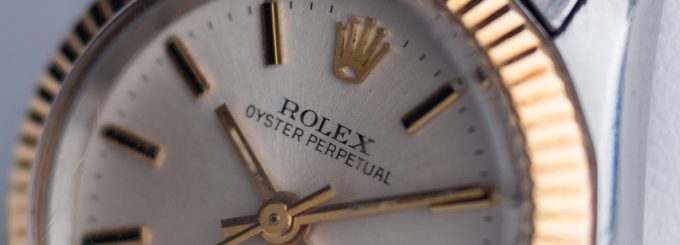1940s 18k Rolex Precision Review

The 1940s 18k Rolex Precision, like other watches of the era, uses a minimalist design. Although much of Europe was being ravaged due to the Second World War, Switzerland maintained its neutrality and was thus able to continue manufacturing watches, which they sold to the various warring factions. Despite the difficulty in obtaining raw materials during this time, the quality of Rolex watches did not diminish.
Both historians as well as many watch collectors believe that the geopolitical situation in Europe during the 1940s allowed Rolex to gain dominant market share in the watchmaking industry. Although the company had already been around for decades, and was respected, it wasn’t yet the dominant global player that we know of today. This changed partly due to the 1815 Treaty of Paris, which kept Switzerland out of WW2, and although surrounded by Axis Powers, the nation’s mountainous terrain combined with its military prowess and mobilization against invasion insured that it could focus on what it did best: manufacturing.
Watch Characteristics
This watch has a 34 mm case and is made with 18 carat yellow gold. It uses teardrop lugs which are 17 mm in width with the original dial, along with golden dial markers and hands. The Rolex movement is outstanding and it attaches to the wrist using a crocodile strap which is brown in color and tapered with a tang that is gold plated. Due to age many of these units will show a bit of wear near the case but has been well cared for and as such is in excellent condition with no serious cosmetic damage.
The Swiss revolutionized watchmaking during the 1940s with their introduction of perpetual movement which was placed within Oyster cases. This allowed some watches of the period to become waterproof, an industry first, and they could still be wound automatically while showing the date aperture. This made them coveted by troops fighting at sea, land or air, especially RAF pilots. Yellow gold is the most popular metal that was used during this time, especially with cream color dials.
Manufacturing Process
Both the Rolex Precision and other models such as the Datejust had to be accurate and extremely durable, as they were often worn by soldiers who undertook high risk missions. The Precision is simple and modest (as much as a Rolex can be) and by 1951 Dwight D. Eisenhower set a new trend by being the first American president to purchase and wear one.
The Precision was also the favored watch of pilots, who needed to transport friendly troops while engaging hostile pilots in dog fights when the need arose. The government issued time pieces issued were abysmal, creating great demand for a watch that could assist wearers through the intensity of aerial combat. The Rolex watches of the period were a natural choice since they could be wound manually and were often manufactured with compass needles that were magnetized.


